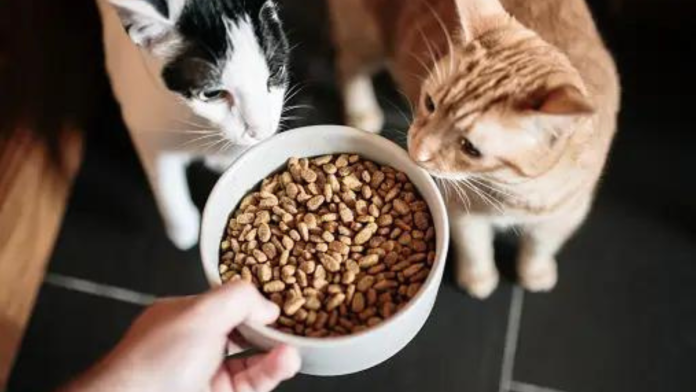Selecting the right food for your cat can be a daunting task given the myriad of options available. The quality of cat food directly impacts your feline friend’s health, energy levels, and overall well-being. This comprehensive guide will help you navigate the complexities of choosing the best cat food for your pet by focusing on crucial factors, from nutritional content to special dietary needs.
1. Understanding Your Cat’s Nutritional Needs
Cats are obligate carnivores, meaning their diet primarily consists of meat. Unlike dogs, cats require specific nutrients that are naturally found in animal tissues. A balanced cat food should contain the following essential nutrients:
- Protein: Cats need high levels of protein for energy, muscle maintenance, and overall health. Look for foods with quality animal proteins like chicken, turkey, or fish listed as the primary ingredient.
- Fats: Healthy fats provide energy and are crucial for maintaining a shiny coat and healthy skin. Omega-3 and Omega-6 fatty acids are particularly beneficial.
- Carbohydrates: While not as critical as protein and fats, some carbs are necessary for energy and digestive health. Opt for foods with limited or easily digestible carbs.
- Vitamins and Minerals: Essential vitamins (like A and D) and minerals (such as calcium and phosphorus) support various bodily functions. Ensure the food has a balanced mix.
2. Types of Cat Food
Understanding the different types of cat food can help you choose what’s best for your pet:
- Dry Food for cats (Kibble): Convenient and often less expensive, dry food helps keep teeth clean through mechanical action. However, it typically contains higher levels of carbohydrates and less moisture.
- Wet Food for cats (Canned): Rich in moisture, wet food is excellent for cats who don’t drink much water. It often contains higher protein levels and is generally more palatable.
- Raw Food: Some pet owners opt for raw diets, believing it closely mimics a cat’s natural diet. This type requires careful preparation and handling to avoid nutritional imbalances and health risks.
- Semi-Moist Food: Though less common, semi-moist food offers a middle ground between dry and wet food. It’s often less nutritious and may contain added sugars and preservatives.
3. Ingredients to Look For
When reading labels, prioritize the following high-quality ingredients:
- Named Animal Proteins: Look for specific sources like “chicken” or “salmon” rather than vague terms like “meat by-products.”
- Whole Foods: Ingredients such as whole grains, vegetables, and fruits can be beneficial.
- Natural Preservatives: Opt for foods preserved with natural antioxidants like vitamin E (mixed tocopherols) instead of artificial preservatives.
4. Avoid Harmful Ingredients
Certain ingredients are best avoided in cat food:
- Artificial Colors and Flavors: These provide no nutritional value and can cause allergies or sensitivities.
- Corn and Soy: While these are common fillers, they can be less digestible for cats and may contribute to allergies.
- By-Products: Animal by-products are less desirable compared to whole meats. They can be less nutritious and harder to digest.
5. Special Dietary Needs
Some cats may have special dietary requirements due to health conditions or age:
- Kitten Food: Kittens require higher protein and fat levels to support growth and development.
- Senior Cat Food: Older cats may need diets with lower calories, adjusted protein levels, and added joint support.
- Allergies and Sensitivities: Cats with food allergies or intolerances may benefit from limited ingredient diets or hypoallergenic formulas.
- Weight Management: For overweight cats, look for weight control formulas with reduced calories and increased fiber to help them feel full.
6. Consult Your Veterinarian
Always consult your veterinarian before making significant changes to your cat’s diet. Your vet can provide personalized recommendations based on your cat’s health, age, and specific needs.
7. Gradual Transition
When switching cat food, do so gradually to avoid digestive upset. Mix a small amount of the new food with the old food and slowly increase the proportion over a week or so.
Choosing the best cat food (Proplan) involves understanding your cat’s nutritional needs, evaluating the types and ingredients of available foods, and considering any special dietary requirements. By selecting high-quality food and consulting with your veterinarian, you can ensure that your feline friend receives the best nutrition for a long and healthy life.









